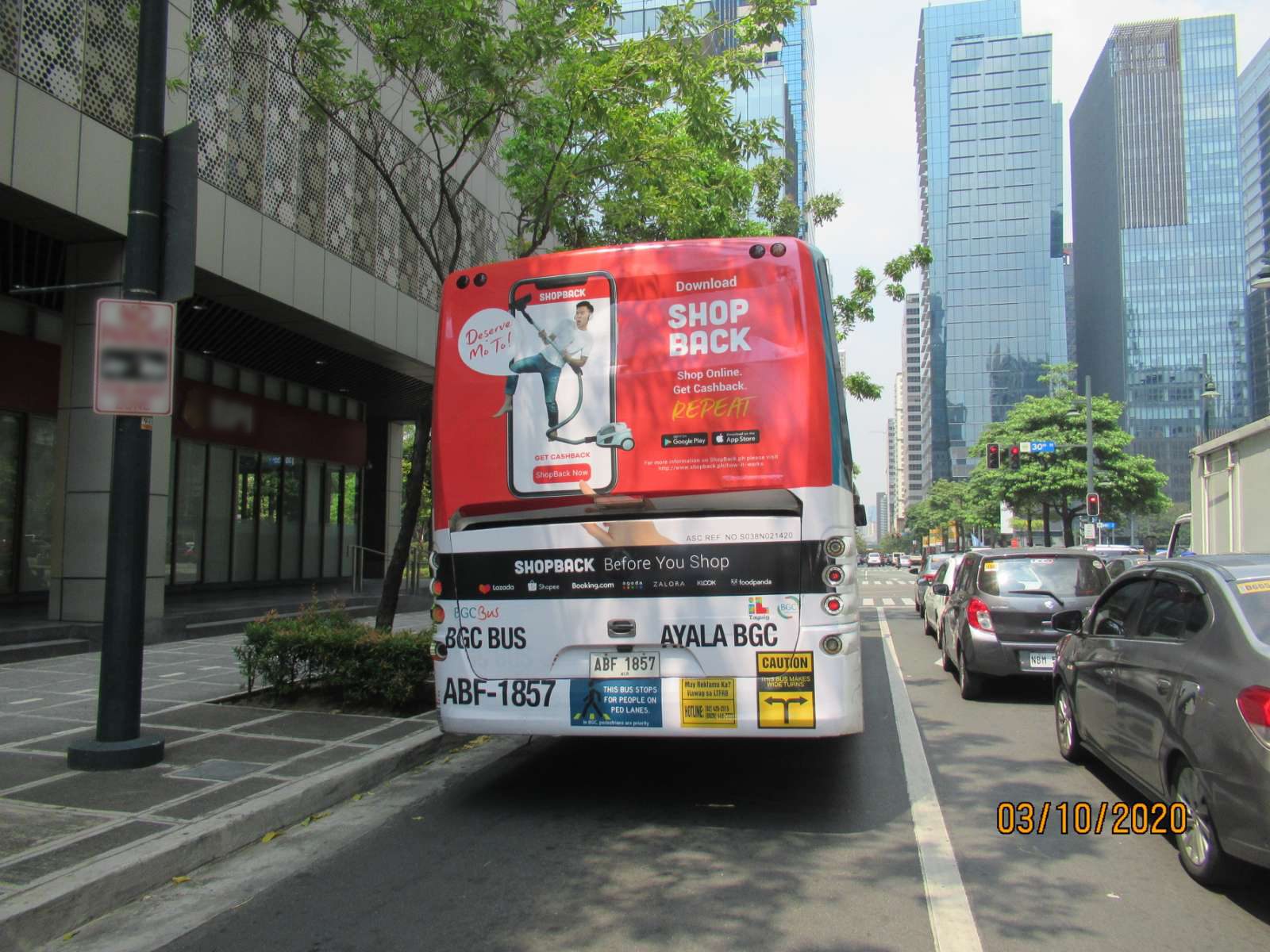Budget-friendly Transit Advertising Philippines for Brand Understanding
Budget-friendly Transit Advertising Philippines for Brand Understanding
Blog Article
A Comprehensive Examination of the Approaches and Methods for Effective Transportation Advertising Campaigns
Transit marketing campaign use an one-of-a-kind chance for brands to involve with varied target markets in vibrant environments. To attain success, it is necessary to understand the nuances of target demographics, apply innovative style methods, and select optimum placement locations. Additionally, the performance of these campaigns can be dramatically improved by closely monitoring performance metrics and adjusting strategies appropriately. As we check out these essential elements, it ends up being clear that the path to an impactful transit advertising and marketing strategy is both intricate and rewarding, raising the concern of just how best to navigate these intricacies for optimal brand name exposure.
Comprehending Target Demographics
Comprehending target demographics is vital for the success of transit marketing campaign (Transit Advertising Philippines). Recognizing details target market sectors enables marketers to customize their messages successfully, ensuring that the material reverberates with the designated visitors. This method boosts engagement and maximizes roi
To successfully assess target demographics, marketers have to think about several key variables, consisting of age, income line of work, lifestyle, and level preferences. As an example, a project targeted at young professionals might concentrate on convenience and modernity, while one targeting families could stress security and integrity. Additionally, geographic aspects such as city versus country setups can substantially affect customer behavior and choices.
Information collection approaches such as studies, focus teams, and social media sites analytics give valuable insights right into market fads and consumer routines. By leveraging this details, advertisers can craft engaging stories that line up with the worths and requirements of their target audience.
Inevitably, recognizing target demographics not only informs the tactical instructions of transit ad campaign but also makes certain that resources are alloted efficiently. This targeted strategy boosts the probability of attaining project purposes, cultivating brand commitment, and driving conversions.
Imaginative Style Techniques
Effective interaction with target demographics counts greatly on innovative creative style strategies in transportation marketing campaign. To properly catch focus in a congested visual environment, developers must prioritize clarity and aesthetic impact. Making use of high-contrast aspects and strong colors can boost presence, making sure that messages are conveniently understandable from a range.
Integrating dynamic images that resonates with the target market is essential. Aesthetic storytelling strategies can stimulate emotions and develop memorable associations with the brand name. Furthermore, tactical use of typography aids convey important info promptly; legible font styles and appropriate sizes additionally boost readability.
Incorporating interactive elements, such as QR codes or augmented truth functions, can involve commuters beyond passive observation (Transit Advertising Philippines). These methods not just promote individual interaction yet also bridge the space between conventional marketing and electronic engagement
Additionally, utilizing space artistically-- whether on bus wraps, transit shelters, or subway ads-- can lead to cutting-edge layouts that damage the mold of conventional advertising and marketing. By welcoming imaginative creativity while keeping brand name consistency, campaigns can promote a solid connection with their audience, eventually driving both recognition and action. The assimilation of these layout techniques is paramount for accomplishing effective transportation marketing end results.
Strategic Placement Methods
Maximizing the influence of transportation advertising and marketing rests on critical placement methods that make certain ideal exposure and involvement. Effective placement entails comprehending and examining high-traffic areas traveler demographics to identify the most beneficial locations for advertisement screens. For instance, positioning ads near entries and leaves of transportation vehicles can catch the interest of boarding and touching down passengers, hence enhancing direct exposure.
Furthermore, using both exterior and interior surface areas of transit vehicles can dramatically expand reach. Exterior ads, visible during commutes, engage pedestrians and various other motorists, while interior ads target travelers in a captive environment. In addition, positioning promotions en route hubs, such as bus terminals or train terminals, enables increased impressions as commuters shift between various modes of transport.
Timing is likewise essential; aligning the campaign launch with peak travel periods maximizes target market engagement - Transit Advertising Philippines. Additionally, leveraging digital screens in transportation atmospheres can promote dynamic content, offering real-time updates and improving individual communication. By employing these strategic placement methods, marketers can make certain that their transportation marketing campaign accomplish optimal visibility, resonate with the target audience, and eventually drive desired outcomes

Gauging Campaign Effectiveness
To evaluate the success of transit advertising and marketing projects, it is necessary to use a variety of dimension techniques that supply insights into target market involvement and general effectiveness. One primary method is making use of essential efficiency indicators (KPIs), such as read review reach, perceptions, and involvement rates, which quantify the number of people communicated and viewed the advertisement with it.
Surveys and focus teams can additionally contribute in evaluating customer assumptions and recall, permitting marketing experts to comprehend the impact of their messaging. Furthermore, tracking site traffic and social networks engagement during and after the campaign helps gauge straight reactions to the marketing.
An additional efficient technique is utilizing location-based analytics, which can supply data on foot website traffic around details transportation places, offering understandings right into whether the project successfully recorded the focus of travelers. Additionally, assessing sales information can reveal connections between transit advertising and raised earnings, supplying substantial proof of a project's effectiveness.
Study of Success
Recognizing the efficiency of transit advertising projects via dimension methods lays the foundation for examining real-world examples that highlight successful outcomes. By using geo-targeted digital advertisements and analytics, the brand name determined a 30% increase in sales in regions where the covers were plainly displayed, demonstrating the direct impact of transportation advertising.
An additional engaging instance comes from a local nonprofit company that introduced a project on metro systems to advertise a neighborhood occasion. The usage of straight involvement through innovation intensified the campaign's reach and efficiency.

Final Thought
In recap, effective transportation ad campaign require a comprehensive technique that incorporates an understanding of target demographics, cutting-edge layout techniques, and strategic placement. By prioritizing psychological involvement with vibrant visuals and maximizing exposure throughout top traveling times, brand names can substantially improve their effect. Furthermore, recurring dimension of project efficiency through essential efficiency indications index and consumer responses makes sure continuous improvement. Collectively, these strategies foster brand existence and maximize the roi en route marketing efforts.
Comprehending target demographics is vital for the success of transportation marketing campaigns.Efficient communication with target demographics counts heavily on cutting-edge imaginative design techniques in transit advertising projects. By using these strategic placement methods, marketing professionals can guarantee that their transit advertising campaigns achieve maximum visibility, reverberate with the target audience, and inevitably drive desired results.
Comprehending the performance of transit marketing projects with dimension methods lays the groundwork for taking a look at real-world instances that highlight effective end results.In summary, successful transit marketing projects demand a detailed approach you can try these out that incorporates an understanding of target demographics, innovative style techniques, and strategic positioning.
Report this page